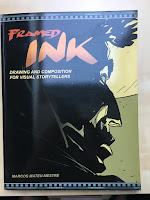When searching cutting edge web site I found that article about emotional interface design.
http://blog.teamtreehouse.com/emotional-interface-design-the-gateway-to-passionate-users
I like how the author describe the remapped Maslow's hierarchy of needs: the interfaces must be first -
functional - they must solve problem for us. Next they need to be
reliable - no fail whales please. Our interfaces need to be
usable - easy to learn, easy to use, and easy to remember. The piece we often overlook is the
pleasure. It is at core of culinary arts, but we find it far too infrequently in the web apps and web sites we use daily.
EMOTIONS IN DESIGN
Babies create bonds with their parents through an interesting loop. When they cry their parents respond by soothing them, which releases calming neurotransmitters in their brain. As this cycle repeats, the baby begins to trust their parents will respond when they need them.
A similar feedback loop happens in interface design. Positive emotional stimuli can build a sense of trust and engagement with your users. People will forgive your site or application's shortcoming, follow your lead, and sign your praises if you reward them with positive emotions.
Tapbots are mentioned as a great example how to put emotions in design but it looks the emotions disappeared in that application. There is not the bird signing and warning when message is long. The design is different and less emotional compare to the picture in the article from 2012.
The design on the right is current. The design lost emotional charge in my point of view.
When reading about the emotions in design I realised that it is a measurement by which I judge applications and games.
GAMES
I love to play "2D games" and there are really great ones
STEAMWORLDDIG,
SHOOTER,
AXIOM VERGE. These games are fulfilled by great gadgets and ideas which make the games valuable. All three games have great progression in enhancing characters and their abilities. SteamWorldDig is great digging game with lots gadgets which help to dig deeper and deeper. Shooter is great example of great ideas how to work with liquidity, gravitation, magnetism etc. Axiom Verge is classic indy games which I love it for its 8-bit music, picture, the game use progression to unlock places in right time. There are other games that are great, open worlds for instance but these three games are and will always be playable forever for me. I have never play games two times, the SteamWorldDig I ave played two time and I will play it again.
PAGES
I remember when I found this webpage about Meth addiction in Exercise 1: Identifying visual communication. The METH project is great web where audience is involved to explore the Meth addiction. Visitors explore what addiction can cause by responsive design driven by mouse position. The sounds very well support the dark side of Meth addiction. I love that web because it shows a problem by sound and interactive design in its best way. It is informative and I learned a lot about that addiction. I really do not understand why there are too many drugs in new series such as The Night off, Mr. Robot. Watching these series I had feelings that to take a drug is normal and without problems. There was an information you can be addicted and it can cause big problems which can lead to death.
This webpage is great example how to inform public about Meth addiction.




























